San Francisco’s Chinatown has a vibe of its own. A quick transition from North Beach’s laid-back Italian cafes or the Financial District’s workaday crowd will put you right into the hustle and bustle of Chinatown’s narrow streets. Visitors can experience sensory overload amongst crowds filling the neighborhood’s sidewalks on busy days.
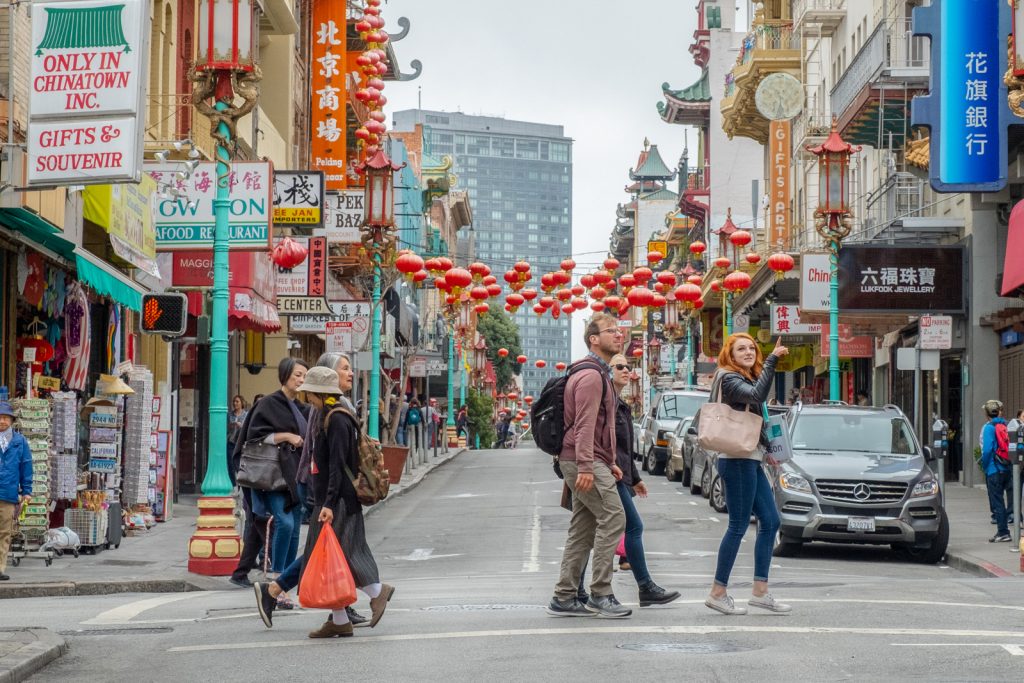
It’s challenging to navigate around daily shoppers to get an uninterrupted view of the intriguing historical surroundings. Distinct architecture, symbolic decorations, and the clutter of retro storefront signage make up the busy streetscape, but there are ways to slow down during your visit to Chinatown to fully experience the neighborhood and what it’s all about—culture and community.
Insider’s tip: San Francisco’s Chinatown is really a special place to visit. If you’re looking for more adventures on your San Fran adventure, make sure to check our our list of 8 Unique Things to do in San Francisco.
Secret alleys make it easy to explore Chinatown
Chinatown’s main thoroughfares get congested with vehicle and foot traffic, but alleyways are an alternate way to get around. Some are dead ends only meant for building access, but some alleys cut through a big city block or two, making it much easier to get around.
Jack Kerouac Alley, a portal between San Francisco’s North Beach Italian-flavored neighborhood, is a pedestrian shortcut from Columbus Avenue to Chinatown’s Grant Avenue. Artwork uniting the two neighborhoods fills the alley. One mural depicts Zodiac symbols and another pays tribute to Bruce Lee. Inspirational lines of poetry from North Beach’s literary legacy are embedded in the walkway.
Deep inside Chinatown, you’ll find Waverly Place, a two-block-long alley with one-way vehicle traffic, an alternate way to maneuver between busy Stockton Street and Grant Avenue. Shops and restaurants open onto the protected promenade creating an outdoor mall feel. Red lanterns dangle and highly decorated architecture soars overhead.
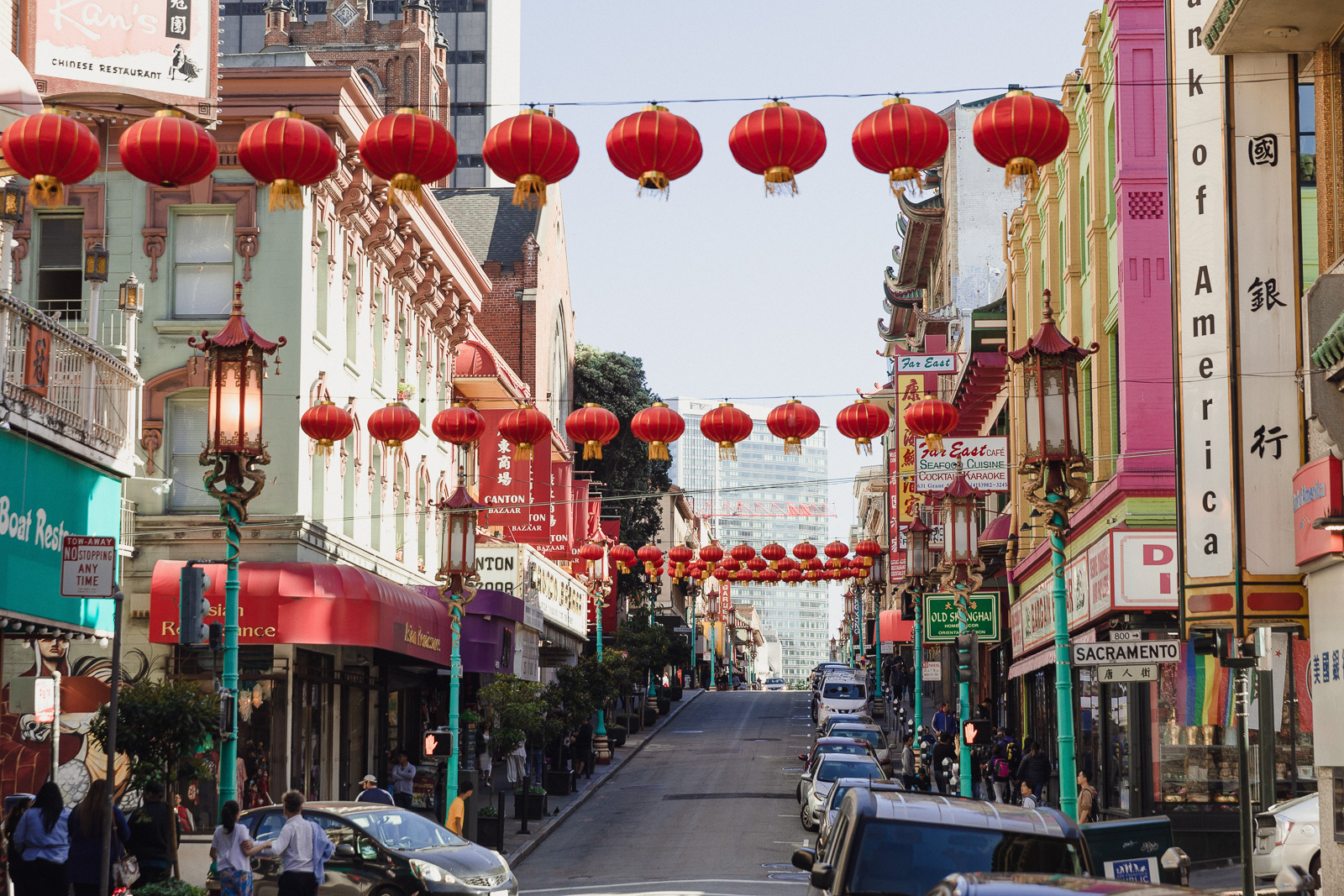
Stylized architecture helped save Chinatown
What you’ll notice first about San Francisco’s Chinatown is its distinct “Asian style” architecture. Pagoda roofline stylings, as seen on the Sing Chong Building (California Street and Grant Avenue), brightly-colored wrought iron balconies, and fancy symbolic ornamentation are theatrically stunning. The neighborhood’s architectural elements are also compelling, especially the Dragon Gate Chinatown entrance (Grant Ave and Bush Street) guarded by ferocious dragons and lions.
But did you know Chinatown’s building style isn’t organic? San Francisco’s 1906 earthquake leveled the neighborhood and city leaders wanted to move the Chinese population out of the area. However, an alternate plan took hold to rebuild the community, focusing on making it appealing to the residents, San Francisco’s population at large, and the world. Now Chinatown is one of San Francisco’s top tourist destinations thanks to the draw of its bold architecture.
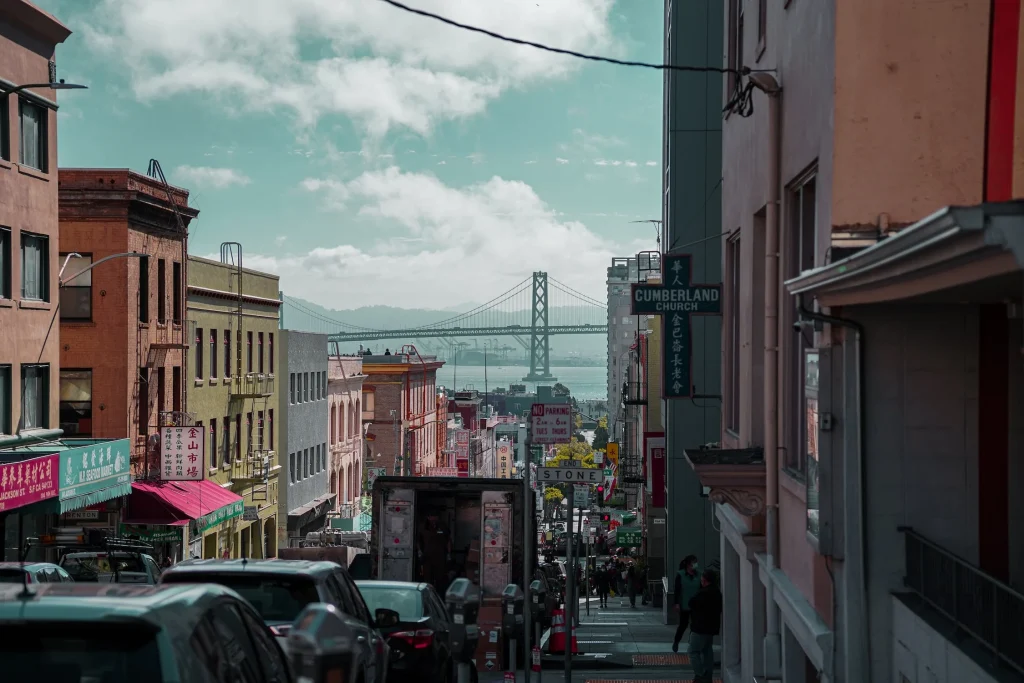
Portsmouth Square: Where Today’s Chinatown Culture Happens
When you visit San Francisco’s Chinatown, you’ll notice there’s something special about Portsmouth Square. Yes, it’s an urban park, but it’s also the “Heart of Chinatown.” Portsmouth Square is a cultural hub cradled by Chinatown flare amidst towering Financial District buildings. The often crowded gathering space allows residents to stretch their legs and get some fresh air. Fiercegames of Chinese checkers go on, as do contemplative early morning tai chi sessions and group prayers. Sit on one of the park’s many benches to appreciate the local culture and incredible city views.
Chinatown street festivals: An immersive cultural experience
San Francisco loves to party, and Chinatown is no exception. The San Fran neighborhood puts on two major demonstrations of Chinese culture and heritage each year. First up, the two-week Chinese New Year Festival & Parade happens at the end of January through the beginning of February. It includes a community street fair with food vendors and non-stop entertainment like Chinese opera, folk dancing, and drumming.
The winners of the Miss Chinatown Pageant are crowned during the festival and then they get to ride on a regal float during the televised nighttime Chinese New Year Parade. All the parade participants incorporate a Chinese cultural theme into their presentations. Martial arts dojos move with exacting precision, dance troops leap in unison, and dragon performers wind serpentine moves to thrill the crowd.
At the end of August, a similar assortment of entertainment comes together to celebrate San Francisco Chinatown Autumn Moon Festival. Over two days, the festival happens on Grant Avenue between California and Broadway Streets. This celebration focuses on the Moon Goddess—Chang E and the feminine side of life. You’ll have to try a mooncake or two because they come in a wide variety of textures and fillings.
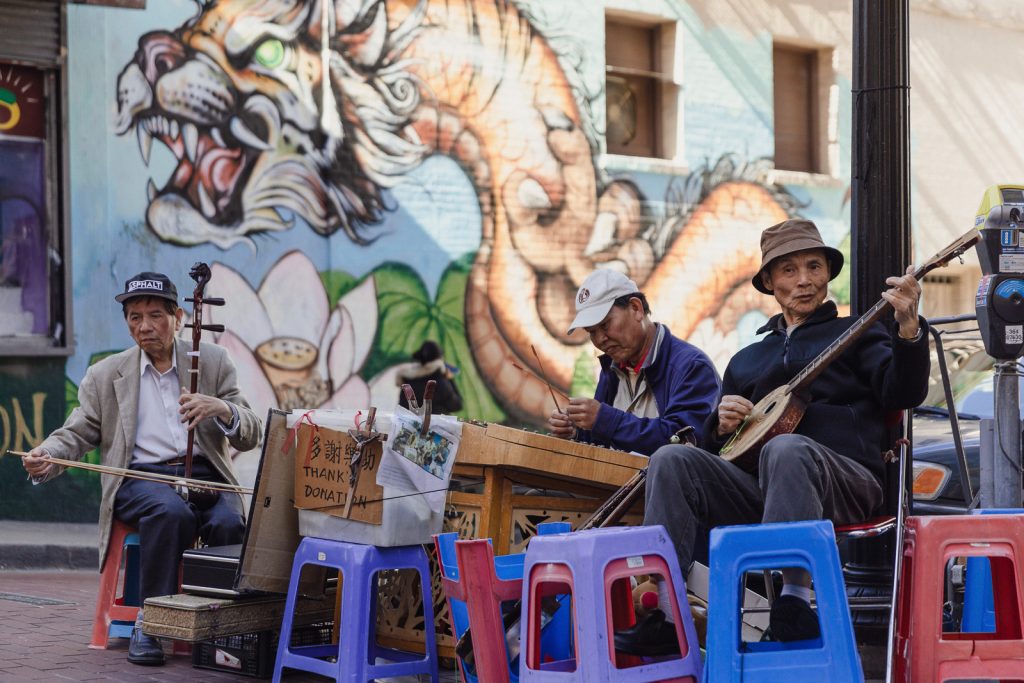
Golden Gate Fortune Cookie Factory, where wishes come true
Follow the sweet smell of fresh cookies wafting through Chinatown’s Ross Alley that leads to the Golden Gate Fortune Cookie Factory. Watch as fortunes are made by hand, vanilla batter bakes quick on a hot rotating griddle wheel, and a cookie maker folds a fortune message into the still-pliable wafer. You’ll get to try the flat version of the cookie and get just enough of a taste to hook you. Fortune cookies are a sweet tradition that also comes in chocolate, strawberry, or green tea. Some are extra special, dipped in chocolate with sprinkles on top. You can get exactly what you wish by ordering custom fortunes for your cookies.
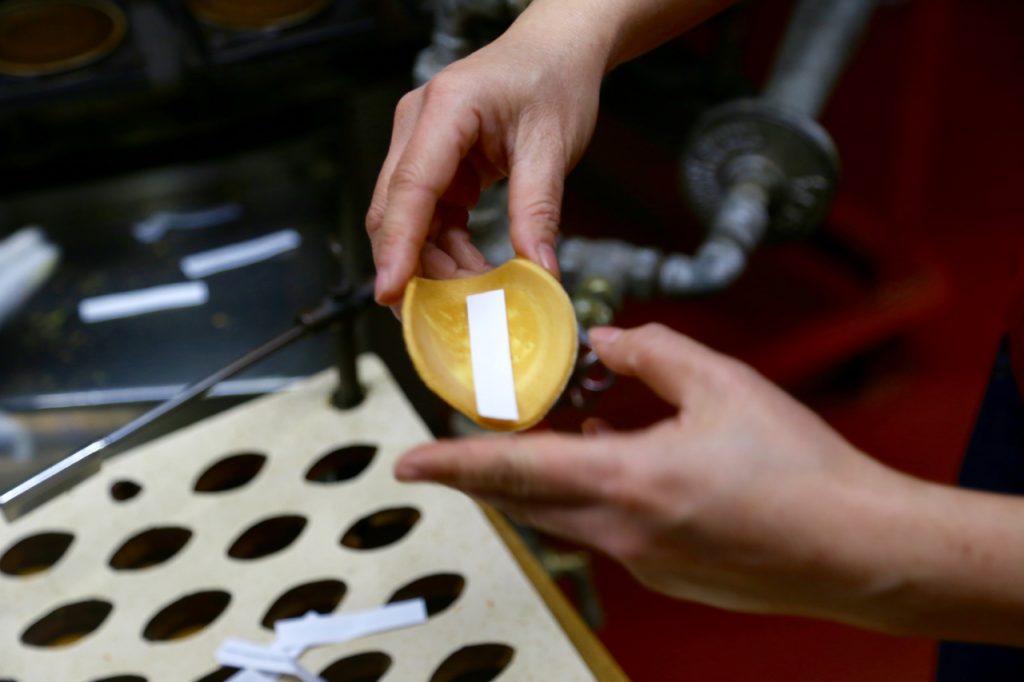
These fortune cookies are legendary so you definitely can’t visit Chinatown without stopping by. And Of course, you certainly can’t visit Chinatown or San Francisco without trying the famous dim sum. Check out our list of the 9 Must-Try Dim Sum Restaurants in San Francisco.
